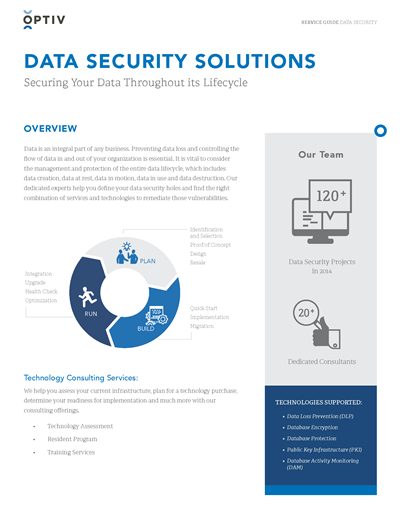Data Destruction Solutions: A Crucial Element in Your Cyber Security Technique
Data Destruction Solutions: A Crucial Element in Your Cyber Security Technique
Blog Article
The Important Nature of Information Devastation in Upholding Computer Safety And Security Solutions and Protecting Versus Unauthorized Access
In an age where information breaches and identity burglary are increasingly common, the significance of effective data devastation can not be overemphasized. Organizations needs to recognize that the failure to effectively deal with sensitive details positions not only legal and financial risks however also a potential disintegration of client trust fund. Numerous approaches, from information wiping to physical damage, serve as essential safeguards versus unapproved accessibility. Understanding the implications of information devastation practices and compliance with guidelines raises important concerns concerning the adequacy of existing techniques and their long-term stability in the face of advancing risks.
Significance of Information Devastation
In a progressively digital world, the significance of data damage can not be overemphasized. As organizations amass substantial quantities of delicate details, the possible repercussions of failing to properly take care of and dispose of that data come to be significantly severe. Data breaches, identification theft, and corporate reconnaissance present significant hazards, highlighting the requirement of reliable information damage techniques.

Furthermore, as technology develops, so also do the methods by which malicious actors seek to make use of delicate details. Organizations has to continue to be attentive and positive in their information destruction strategies to guard against these evolving dangers. By focusing on data destruction, companies not only shield their possessions but also foster depend on amongst stakeholders and clients, demonstrating a dedication to responsible information administration and safety and security techniques.
Methods of Effective Data Destruction
To guarantee the full and permanent devastation of delicate information, companies can use a range of efficient approaches customized to their details needs. Among the most usual methods is data cleaning, which includes making use of specialized software to overwrite existing information numerous times, making recuperation essentially difficult. This is specifically valuable for solid-state drives and difficult drives, where conventional removal approaches are poor.
Another reliable approach is degaussing, which makes use of strong electromagnetic fields to disrupt the magnetic domains on storage space media, rendering the information irretrievable. This approach is particularly matched for magnetic storage devices, such as tape drives and hard drives.
Physical damage is likewise a viable option, entailing the shredding, crushing, or incineration of storage tools. This method guarantees that data can not be recuperated, making it ideal for organizations dealing with highly sensitive details.

Conformity With Data Protection Rules
Organizations should not only concentrate on efficient information devastation methods however also make certain conformity with information security laws that govern how delicate info is taken care of and taken care of. Following these regulations is vital for safeguarding personal data and maintaining customer trust fund. Rules such as the General Data Protection Regulation (GDPR) in the European Union and the Medical Insurance Portability and Responsibility Act (HIPAA) in the United States enforce stringent guidelines on information administration, that include needs for the protected disposal of sensitive info.
To achieve conformity, companies should implement thorough data destruction policies that align with these legal frameworks. This includes determining data that requires damage, developing protocols for protected methodsâEUR" such as shredding physical media or utilizing software program that satisfies industry standards for information wipingâEUR" and preserving thorough records of devastation activities. Normal audits should be conducted to make sure adherence to these policies and to recognize useful reference any prospective areas for enhancement.
Failure to follow data protection regulations can result in considerable lawful implications, including hefty penalties and damages to a company's reputation. Integrating conformity right into information destruction practices is not just a legal commitment yet likewise an essential part of a durable information security approach.
Repercussions of Poor Data Handling
Poor data handling can cause extreme repercussions that expand beyond instant operational problems. Organizations may encounter considerable financial losses as a result of information breaches, which often result in costly remediation initiatives, legal fees, and governing penalties. These financial effects can stress resources and hinder growth, ultimately impacting an organization's bottom line.
Moreover, inadequate data handling can drastically harm an organization's online reputation. Stakeholders, customers, and companions might lose rely on an entity that stops working to secure delicate info, resulting in decreased consumer loyalty and prospective loss of organization opportunities. This disintegration of count on can take years to rebuild, if it can be recovered at all.
Furthermore, companies can deal with legal ramifications emerging from non-compliance with information defense policies. Such infractions may lead to fines and examinations, compounding the monetary burden and further staining the organization's picture.
In the world of cybersecurity, poor information management practices can create vulnerabilities that make systems more vulnerable to unapproved gain access to and cyberattacks. Inevitably, these repercussions emphasize the important significance of executing durable data handling treatments to secure delicate information and preserve organizational stability.
Ideal Practices for Secure Information Disposal


First of all, data ought to be identified according to its level of sensitivity. Sensitive information needs more rigorous disposal methods, such as shredding physical papers and utilizing innovative software program for electronic information cleaning. Using qualified information destruction solutions guarantees conformity with sector policies and requirements.
Secondly, organizations ought to implement a data disposal policy that mandates routine audits. This policy must describe the treatments for data retention and devastation, navigate here making certain that out-of-date information is gotten rid of immediately and securely. Training employees on these methods is necessary to cultivating a society of safety and security understanding.
Finally, keeping in-depth records of disposed data enhances accountability and provides a clear audit path. This documentation should include the type of information ruined, the technique made use of, and the date of disposal.
Final Thought
Taking on durable approaches such as information cleaning, degaussing, and physical devastation, together with conformity with laws like GDPR and HIPAA, is important for protecting sensitive information. Disregarding correct data disposal practices can lead to severe effects, including data breaches and lawful effects.
In an era where information breaches and identification burglary are significantly common, the relevance of reliable data destruction can not be overstated. data destruction. Data breaches, identity theft, and company reconnaissance position significant risks, highlighting the necessity of effective information devastation methods
Compliance with guidelines such as GDPR and HIPAA requireds that organizations carry out stringent data protection steps, consisting of the secure destruction of data at the end of its lifecycle.
By focusing on Learn More Here information damage, business not only shield their assets yet also foster count on amongst stakeholders and clients, showing a commitment to liable information management and safety and security practices.
Organizations have to not just concentrate on effective information destruction methods however likewise ensure compliance with information security policies that control exactly how delicate information is managed and disposed of.
Report this page